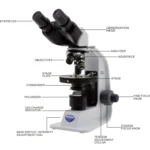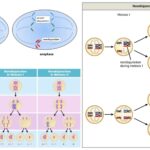O Level Biology 76 Views 1 Answers
Sourav PanLv 9November 2, 2024
State the main features used to place organisms into groups within the plant kingdom, limited to ferns and flowering plants (dicotyledons and monocotyledons)
State the main features used to place organisms into groups within the plant kingdom, limited to ferns and flowering plants (dicotyledons and monocotyledons)
Please login to save the post
Please login to submit an answer.
Sourav PanLv 9May 15, 2025
Organisms within the plant kingdom are categorized into various groups based on their distinct features. Here, we will focus on two major groups: ferns and flowering plants, which include dicotyledons and monocotyledons.
Main Features Used to Classify Ferns
- Reproductive Structures:
- Ferns reproduce via spores rather than seeds or flowers. The reproductive structures, called sporangia, are typically found on the underside of leaves (fronds) in clusters known as sori.
- Plant Structure:
- Ferns have a vascular system, which includes true roots, stems, and leaves (fronds). The main body is often a rhizome, which can be underground or above ground in tree ferns.
- Leaf Morphology:
- The leaves of ferns are called fronds and can be simple or divided (pinnate). Young fronds typically uncoil from a coiled position known as a fiddlehead.
- Life Cycle:
- Ferns exhibit a distinct alternation of generations, with a dominant sporophyte phase (the leafy fern we see) and a free-living gametophyte phase that produces gametes for fertilization.
- Habitat:
- Ferns are primarily found in humid environments, often thriving in shaded areas like forests and wetlands.
Main Features Used to Classify Flowering Plants
Flowering plants are divided into two main groups based on the number of cotyledons (seed leaves):
1. Dicotyledons (Dicots)
- Seed Structure: Dicots have two cotyledons in their seeds.
- Leaf Venation: Typically exhibit net-like or branching venation patterns in their leaves.
- Flower Structure: Flowers usually have parts in multiples of four or five (e.g., four petals, five sepals).
- Root System: Generally have a taproot system, with one main root growing deeper and smaller lateral roots branching off.
- Examples: Roses, sunflowers, and oaks.
2. Monocotyledons (Monocots)
- Seed Structure: Monocots have one cotyledon in their seeds.
- Leaf Venation: Leaves usually display parallel venation.
- Flower Structure: Flowers typically have parts in multiples of three (e.g., three petals, six stamens).
- Root System: Usually possess a fibrous root system with many thin roots spreading out from the base.
- Examples: Grasses, lilies, and orchids.
Summary Table
| Group | Key Features |
|---|---|
| Ferns | – Reproduce via spores (no seeds/flowers) |
| – Vascular plants with true roots, stems, and fronds | |
| – Fronds may be simple or pinnate; young fronds uncoil from fiddleheads | |
| – Dominant sporophyte phase; free-living gametophyte phase | |
| – Prefer humid habitats | |
| Dicotyledons | – Two cotyledons |
| – Net-like leaf venation | |
| – Flower parts in multiples of four or five | |
| – Taproot system | |
| – Examples: roses, sunflowers | |
| Monocotyledons | – One cotyledon |
| – Parallel leaf venation | |
| – Flower parts in multiples of three | |
| – Fibrous root system | |
| – Examples: grasses, lilies |
This classification helps in understanding the diversity and evolutionary relationships among different plant groups within the plant kingdom.
0
0 likes
- Share on Facebook
- Share on Twitter
- Share on LinkedIn
0 found this helpful out of 0 votes
Helpful: 0%
Helpful: 0%
Was this page helpful?




